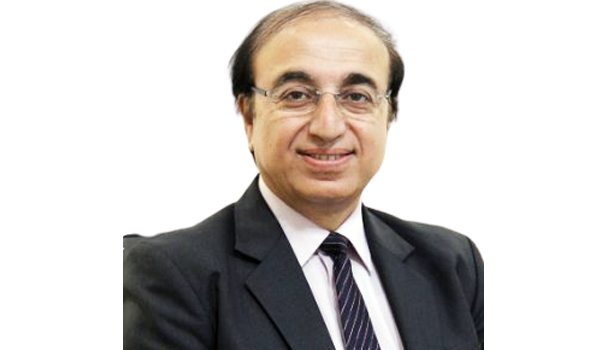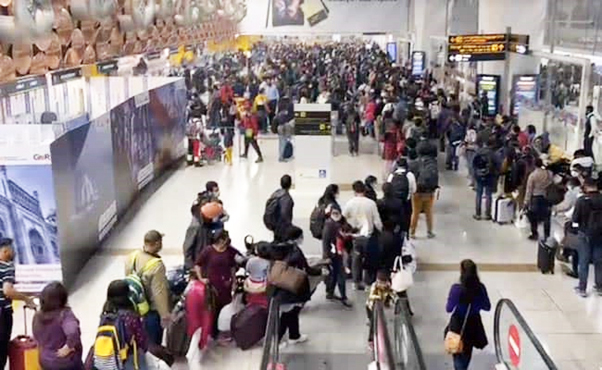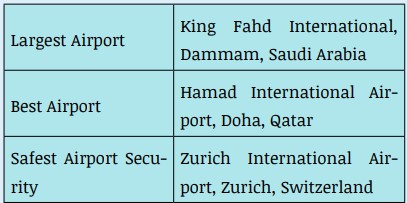
Harsh Wardhan, Chief Executive Officer, CSC India
From airports to aircraft, Covid-19 exhibited a situation that no one had ever imagined before. The aviation sector has blatantly shown that it is ready for a recovery. Airports all around the world have been quick to install more robust safety measures to guarantee that the faith of the patron is not jeopardized.
Airports have been subjected to a fast-changing environment, which includes governing the rules, passenger processing, sanitization inside airport facilities, and the introduction of new biometric technology. New norms were formed for the aviation industry to tackle this deadly virus with the ultimate objective, to prevent its spread and saving lives.
On April 17, 2022, the Indian aviation sector attained the milestone of 4,000,00 daily domestic flight passengers for the first time since the Covid-19 epidemic began. The airlines carried 4,07,975 people on 2,838 flights, or around 95.5% of daily domestic air passenger volume prior to Covid-19. (Source: Businesstoday.in)
Without airport security, the airport would be exposed to unforeseen terrorist and criminal attacks. The airport’s security procedures deter criminals from undertaking such acts. India’s airport security is managed by the Central Industrial Security Force (CISF). Airports are increasingly using cutting-edge equipment and technologies to combat possible risks to travelers and make air travel safer because of technological advancements. The Central Industrial Security Force (CISF) has been looking after the airport’s security for more than 2 decades and has been very proactive and vigilant in identifying threats.
Jewar airport is now coming very soon, as it is a subsidiary of Zurich international airport, the development is a part of the government’s goal to enlarge current airports and construct new ones to support regional air traffic growth and maintain air traffic growth in crowded metro areas.
A second airport in the National Capital Region is necessary to manage anticipated increases in traffic because the existing Indira Gandhi International Airport in Delhi is about to reach capacity. It is said that Jewar airport will be incorporated with Digiyatra technology to enhance security. However, the same is optional if a passenger is not comfortable with it, they will then have to manually do all the procedures.

A few episodes in the aviation industry that might pose a potential threat to the industry are as follows:
- Access to the airport terminal area for guests and staff.
- Insufficient luggage and passenger screening.
- Inadequate airport or aircraft upkeep.
- Overcrowding around the nearby gates during boarding.
- Carrying weapons discreetly.
- Not co-operating with the security or airline staff.
- Use a sharp object as a weapon.
- Making a call to the airline/ staff/ airport of a bomb threat.
These issues require a sensitive approach to tackle, or they can turn into a very serious event because they are critical to security, and airports play a big part in the national economy. Airport infrastructure is an essential part of the entire transportation system, and it has a direct impact on a nation’s ability to compete internationally and attract foreign investment as safeguarding the airport is always a priority.
The safety and security of infrastructure can be upgraded, if the following things are taken care of:
- Reviewing & understanding the existing security procedure and emergency plan. This must be carried out each year for the upgradation of technology and laws.
- Auditing the entire premises every four months to ensure compliance.
- Airport is the most sensitive place to work, the staff responsible to look after the safety and security of the airport, must be highly skilled and trained to handle all kinds of situations if needed.
- Security agency: A trusted, competent, and diligent security agency that has handled sensitive events in the past and is capable to handle airport security as well.
- Zoning: Zoning the airport and assigning heads associated with each zone. The zone head will be responsible to provide daily track records and compliance reports.
- An extremely powerful scanner that passengers go through may detect potential hidden dangers without requiring them to remain still.
- Introducing security checkpoints: This is a recent addition to security, as not all the airports in India follow this precaution. Introducing the same one hundred percent in all airports would filter suspicious-looking individuals to enter the airport.
- Manning: The restrooms are often unmanned, especially at the arrival area, one potential threat of this is the unavailability of the staff in case of a medical emergency.
- Fencing: The latest technology in airport fencing is fiber net fencing. Fiber net, the mesh, vertical posts, wind-bracings, and outrigger arms of airport perimeter fences are made of continuous glass fibers infused with a thermosetting resin matrix. Smaller accessories, fittings, and fastening components are made of stainless steel or galvanized steel. This technology has got various benefits as it is cost-friendly and most importantly doesn’t interfere with various aircraft radar systems.
- Traveler friendly: Maintaining airport safety and security is a priority for the authorities however, Travelers arriving from different countries often find themselves lost due to language barriers or cultural differences. Airport authorities can resolve this by providing concierge assistance at a regular distance. This would certainly aid in smoother and crowd-free airport operations.
In terms of airport security, customer satisfaction, and infrastructure globally, the following airports topped the Skytrax list for the year 2022.

The annual Skytrax World Airport Awards 2022 recognize Bengaluru’s Kempegowda International Airport as the best regional airport in South Asia and India. Four Indian airports, Delhi, Mumbai, Hyderabad, and Bengaluru secured 37th, 65th, 63rd, and 61st ranks respectively in the list of top 100 airports in the world 2022 by Skytrax. All these airports have climbed up the ladder if compared to the list of 2021.
It is delightful to see that the Indian aviation sector is improving the quality-of-service year after year and is displaying a progressive country image to the world. Airports are under pressure to contribute to the fight against the evolving threats to aviation. A good security operation depends on performance management, both in terms of security criteria and delivery.
This article does not reflect the views of any organization or publication. They are solely personal to the author’s research and opinion.
